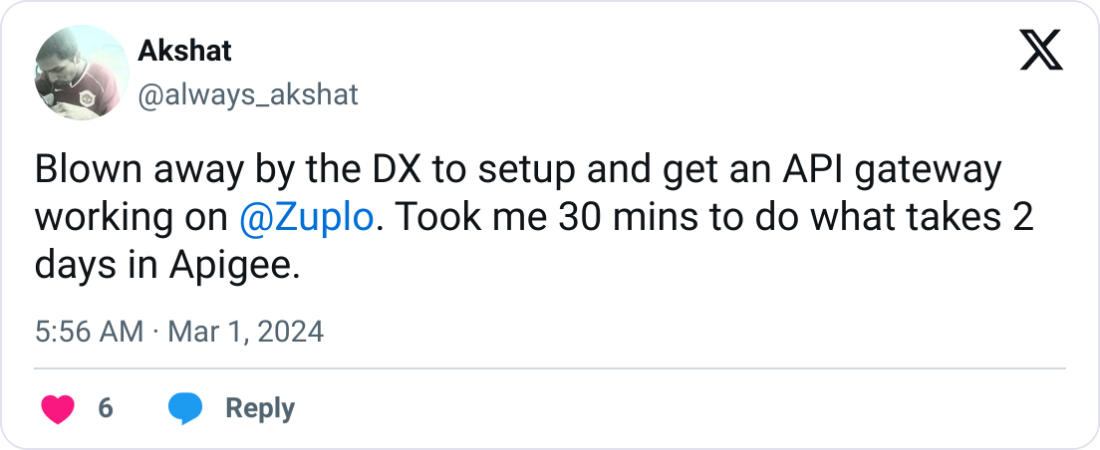Poor API documentation costs you time, money, and developer goodwill. Most teams postpone documentation indefinitely, treating it as a low-priority task rather than a strategic asset. The reality? Effective API docs cut onboarding time from weeks to hours and determine whether developers adopt your API or flee to competitors. It's no surprise that Postman's research found 52% of developers identify poor documentation as their biggest obstacle when working with APIs.
Documentation isn't just technical paperwork—it's a business asset that directly impacts adoption, support costs, and team productivity, playing a crucial role in enhancing developer experience and your API product strategy. Ready to transform this neglected resource into your API's secret weapon? Let's dive in.
- The Essential Elements of Effective API Docs
- The High Cost of Documentation Neglect
- Creating Developer-Friendly Documentation That Actually Works
- Practical Documentation Frameworks That Drive Adoption
- Supercharge Your Documentation with the Right Tools
- The Business Payoff of Stellar Documentation
- Keeping Your Documentation Fresh and Effective
- From Documentation Disaster to Developer Delight
The Essential Elements of Effective API Docs#
Good documentation does more than list endpoints and parameters. It creates a complete picture of your API ecosystem that developers can easily navigate. Comprehensive docs include:
- Authentication methods that clearly explain how to secure connections
- Request/response formats showing exactly what to send and expect back
- Error codes with actionable troubleshooting guidance
- Rate limits explaining usage boundaries and consequences
- Versioning details to help manage API evolution
Organization matters as much as content. Well-structured documentation follows a logical flow—starting with authentication, explaining core concepts, and then exploring specific endpoints by function. This helps developers build mental models as they learn your API.
Documentation formats have evolved, with OpenAPI Specification becoming the standard for REST APIs. Using OpenAPI documents ensures consistency and streamlines the creation of comprehensive API references. GraphQL APIs often use tools like GraphiQL and GraphQL Playground for interactive, schema-generated documentation.
Context separates basic documentation from exceptional documentation. Explaining not just how but why and when to use endpoints gives developers API documentation insights for smart implementation decisions.
The High Cost of Documentation Neglect#

When you skimp on API documentation, you transform what should be a straightforward integration into a frustrating obstacle course for developers. The consequences ripple throughout your business in ways you might not expect.
- When developers can't find answers in your docs, everything slows down. The immediate fallout — your support team drowns in tickets. Companies with inadequate API documentation face a flood of support requests compared to those with comprehensive docs. These questions could have been answered by proper documentation, needlessly burdening technical teams.
- The business consequences extend beyond internal bottlenecks, too. Imagine a new partner integrating with your payment API. Without clear guidance on handling edge cases like partial refunds or failed transactions, they might implement incorrect error handling. This creates production issues, damaging both your reputation and the partnership.
- And there's another hidden cost — developer frustration. When forced to reverse-engineer APIs or guess at implementation details, developers experience stress and dissatisfaction, affecting both external adopters and internal teams maintaining these integrations.
Creating Developer-Friendly Documentation That Actually Works#
Creating documentation that genuinely accelerates developer onboarding requires intention and ongoing care. Effective documentation balances completeness with accessibility—containing all necessary technical details while remaining navigable.
Meet Developers Where They Are#
Your audience isn't one-size-fits-all. You're serving multiple personas—from senior architects making implementation decisions to junior developers doing hands-on coding. Your documentation needs to speak to them all effectively. Smart strategies include creating tiered documentation with quick-start guides for newcomers, detailed references for implementers, and architectural overviews for decision-makers.
When designing your documentation strategy, consider the developer journey from exploration to implementation to troubleshooting. Each stage requires different information in different formats. Exploration needs conceptual overviews and use cases. Implementation thrives on code samples in multiple languages. Troubleshooting demands detailed error descriptions and solution patterns. Mapping documentation to this journey creates a natural learning progression that builds confidence at each step.
Write for Clarity and Comprehension#
Clear, precise writing dramatically speeds up implementation and reduces confusion. The quality of your writing directly impacts how quickly developers can implement your API. Here are some time-tested techniques:
- Technical writing demands precision without unnecessary complexity. Documentation using consistent terminology and avoiding jargon leads to faster task completion and fewer support questions.
- Good API documentation uses short, direct sentences with active voice. It standardizes terminology and defines technical concepts before using them, creating a shared vocabulary between your team and external developers.
- Keeping naming conventions consistent between documentation and actual API responses prevents confusion and debugging headaches. What you call a resource in your docs should match exactly what appears in your API responses.
- Diagrams dramatically improve comprehension. Visuals of request/response flows and system interactions reduce comprehension time compared to text alone. They're worth the extra effort, especially for complex authentication flows or multi-step processes.
- Code samples should follow a progression: first showing the simplest implementation, then adding complexity for common use cases. Each sample should work with minimal modification while highlighting the most important elements. Including samples in multiple programming languages shows respect for your developers' diverse tech stacks.
The investment in clear writing pays dividends through faster integration times and reduced support burden. Remember that documentation is often the first impression developers have of your API's quality and your team's professionalism.
Make Your Docs Interactive#
Nothing accelerates understanding like hands-on experience with your API. Interactive documentation transforms passive reading into active learning and significantly reduces the time to first successful API call. API explorers that let developers make live calls directly from documentation have become standard. Using solutions that automatically generate developer portals can provide these interactive experiences effortlessly. These tools allow experimenting with different parameters and seeing actual responses without writing code, creating immediate feedback that builds confidence.
Consider including a sandbox environment where developers can test calls with temporary credentials. This creates a safe space for experimentation without risking production data or requiring a complete setup. The confidence gained from successful test calls dramatically speeds up the path to production integration.

Over 10,000 developers trust Zuplo to secure, document, and monetize their APIs
Learn MoreKeep Version Control Crystal Clear#
Clear versioning prevents integration disasters when your API inevitably evolves. APIs change, and documentation must communicate these changes clearly and consistently. Effective version management is the difference between smooth transitions and frustrated developers. Understanding various API versioning methods can help you choose the best approach for your API.
- Good version management includes explicitly labeling all documentation with its corresponding API version. Changes between versions should be highlighted with changelog entries distinguishing between backward-compatible additions and breaking changes. Make these changelogs prominent—they're critical reference points during upgrades.
- Some teams maintain separate documentation for each major version, while others use a single set with inline version indicators for changed features. The right approach depends on how drastically your API changes and your capacity to maintain multiple documentation sets. Whatever approach you choose, consistency matters most.
- Deprecation notices should appear prominently for features scheduled for removal, ideally with migration guidance to alternatives. Give developers adequate time to adapt by communicating deprecation timelines well in advance. Offering migration assistance tools or code samples specifically for transitioning from deprecated features demonstrates respect for your developers' time.
Well-documented versioning creates trust that your API is professionally maintained and evolving in a controlled manner. This trust is essential for developers considering whether to build on your platform for the long term.
Practical Documentation Frameworks That Drive Adoption#

Documentation structure makes or breaks developer experience. The right framework can make your API feel intuitive rather than intimidating. Utilizing tools like TypeSpec for API documentation can enhance your documentation's effectiveness. Let's explore how to design documentation that helps developers get up and running quickly without missing critical details. Here's how to get started building documentation frameworks that work.
Documentation Patterns That Work Across Industries#
Certain documentation patterns consistently earn praise from developers regardless of industry or API type. Studying these patterns reveals what makes documentation truly effective.
The "overview-detail" pattern arranges information in layers, starting with broad concepts and drilling down to specifics. This approach mirrors how developers typically learn new technologies.
- Begin with a conceptual overview explaining key ideas and how components fit together.
- Provide feature-specific documentation that builds on these foundational concepts.
- Include detailed API references for when developers need precise specifications.
- Structure navigation to allow developers to move easily between these different levels of detail.
The "learning path" pattern organizes documentation as a journey, guiding developers from their first API call to complex implementations. This structure works particularly well for complex APIs with steep learning curves.
- Start with a "Hello World" example that demonstrates the absolute minimum needed for a successful API call.
- Follow with guided tutorials for common use cases, each building on previous knowledge.
- Complete the journey with advanced implementation patterns and optimization techniques.
- Use clear signposting so developers can identify where they are in the learning process.
The "cookbook" pattern supplies ready-made solutions for common implementation challenges. This approach is especially valuable when your API can be used in many different ways.
- Structure content as problem-solution pairs with complete, working examples.
- Include the reasoning behind each solution so developers understand the approach.
- Highlight potential pitfalls and edge cases to help developers avoid common mistakes.
- Group recipes by use case or complexity to help developers find relevant examples quickly.
Making Your Documentation Discoverable#
Even perfect documentation fails if developers can't find what they need when they need it. Discoverability transforms good documentation into genuinely useful documentation.
Effective search functionality stands at the center of discoverable documentation.
- Implement filters that allow searching by category, feature, or use case.
- Configure your search to understand API-specific terminology and handle variations in technical terms.
- Include related content sections that guide developers to information they might need next.
- Ensure search results provide enough context to help developers determine relevance without clicking through.
Navigation design significantly impacts how efficiently developers find information.
- Create persistent navigation with logical groupings to help developers maintain context.
- Implement breadcrumbs showing the current location within the documentation hierarchy.
- Use tab structures to separate different content types (reference, guides, examples) without forcing navigation away from the current context.
- Design mobile-friendly navigation that works well across different devices and screen sizes.
Tagging and categorization creates additional pathways to discovery.
- Tag documentation pages with relevant concepts, languages, and difficulty levels.
- Allow developers to browse documentation based on their specific needs rather than following a predetermined structure.
- Highlight popular or frequently accessed pages to help new users discover essential information quickly.
- Consider integrating visual cues like icons or color coding to distinguish between different types of content.
Measuring Documentation Effectiveness#
Documentation that doesn't help developers isn't doing its job, regardless of how technically accurate it might be. Implementing measurement systems helps you continuously improve your documentation's effectiveness.
Usage analytics reveal how developers actually interact with your documentation.
- Track metrics like time spent on different pages and search queries that yielded no results.
- Analyze navigation patterns between pages to understand typical learning journeys.
- Identify which sections developers find most valuable or where they might be struggling.
- Use tools like Google Analytics, Heap, or purpose-built documentation analytics platforms to gather these insights.
User feedback mechanisms provide qualitative data to complement your analytics.
- Add simple feedback options like "Was this helpful?" buttons to each page, with optional comment fields.
- Implement a voting system that allows developers to prioritize documentation improvements.
- Conduct regular surveys or interviews with active users to reveal deeper insights.
- Create feedback channels that make it easy for developers to report issues or suggest improvements.
Documentation completion tracking measures how thoroughly developers engage with your content.
- Monitor which documentation sections new users visit during their first weeks of API usage.
- Correlate documentation engagement with successful API implementation.
- Identify which documentation elements most strongly contribute to successful onboarding.
- Use this data to prioritize documentation improvements where they'll have the greatest impact on developer success.
Supercharge Your Documentation with the Right Tools#
Choosing the right documentation tools can transform your team's efforts and dramatically improve the developer experience. Modern documentation platforms fall into several categories that serve different needs:
- Reference generators like Swagger UI automatically create API references from OpenAPI specifications, keeping documentation in sync with the actual API
- Documentation portals like ReadMe provide complete developer experience platforms with customization, analytics, and feedback mechanisms
- Static site generators like Docusaurus offer flexibility for teams comfortable with Markdown and Git workflows
If you'd like a tool that combines all of those features and is Open-Source - we highly recommend Zudoku.
Automation capabilities have become crucial as APIs grow more complex. Tools generating documentation directly from code annotations or API definitions prevent documentation drift when implementations change. Teams using automated documentation tools are significantly more likely to update documentation with each release.
When choosing between tools, consider your team's workflow. If your team is comfortable with Markdown and Git, static site generators provide flexibility without complex system overhead. For teams without dedicated technical writers, structured platforms with templates and guided authoring may work better. Integration capabilities matter too. Documentation tools should connect with your development ecosystem—whether GitHub for version control, CI/CD pipelines for automatic deployment, or API gateways for runtime updates. For larger-scale needs, you might consider building API integration platforms that tightly integrate documentation with your infrastructure.
The Business Payoff of Stellar Documentation#
Great documentation isn't just nice to have—it delivers measurable business benefits that impact your bottom line. Quality API documentation, such as through promoting OpenAPI specifications, creates significant competitive advantages. When you prioritize documentation quality, you're building a business asset that drives adoption and reduces costs. This adoption advantage translates to real business outcomes, especially for APIs serving as products or platform extensions.
- Support costs show dramatic improvements. Proper documentation can dramatically reduce the number of API-related support tickets, which frees technical teams from repetitive queries to focus on improving the API itself.
- Partner onboarding speeds up significantly with strong documentation. Organizations with comprehensive API documentation onboard new integration partners way faster, accelerating time-to-value for both parties.
- Most importantly, you directly influence developer perception of your entire product and organization. This affects both adoption decisions and recruitment efforts when hiring developers familiar with your ecosystem.
Keeping Your Documentation Fresh and Effective#
Documentation isn't a set-it-and-forget-it asset—it needs ongoing care to remain useful and to continue reducing developer onboarding time. Implementing sustainable maintenance practices ensures your documentation remains a valuable resource rather than becoming outdated and misleading.
Define clear ownership for documentation at each stage of the development lifecycle.
- Assign specific documentation responsibilities, whether to developers creating features, dedicated technical writers, or both.
- Create accountability by including documentation quality in performance reviews and project evaluations.
- Document the documentation process itself so team members understand their responsibilities.
- Consider rotating documentation duties to build broader expertise and prevent burnout.
Establish update triggers to ensure documentation stays current with your API.
- Link documentation reviews to changes in endpoints, parameters, authentication, or response formats.
- Include documentation updates in your definition of "done" for feature development.
- Automate documentation testing where possible to catch discrepancies between docs and actual API behavior.
- Set regular calendar reminders for reviewing sections prone to becoming outdated, like rate limits or pricing.
Create effective feedback loops to drive continuous improvement.
- Provide mechanisms for developers to flag outdated or unclear content directly within documentation.
- Follow up on documentation feedback with the same priority as feature requests or bug reports.
- Track common support questions and use them to identify documentation gaps.
- Acknowledge contributors who improve documentation to encourage ongoing participation.
Select meaningful quality metrics to measure documentation effectiveness.
- Monitor metrics like time-to-first-successful-API-call for new developers.
- Track support ticket volume specifically for documentation-related questions.
- Analyze API adoption rates in relation to documentation updates and improvements.
- Use these concrete measures rather than relying solely on subjective assessments.
Conduct regular audits to supplement ongoing maintenance processes.
- Schedule comprehensive reviews of the entire documentation set, particularly before major releases.
- Check for inconsistencies, outdated information, or gaps missed during incremental updates.
- Verify that examples still work with the current API version.
- Test documentation on different devices and platforms to ensure universal accessibility.
From Documentation Disaster to Developer Delight#
Great documentation isn't a luxury—it's the foundation of API success and developer happiness. Documentation quality directly determines whether your API thrives or struggles. By making your docs a priority, you're not just meeting a technical requirement—you're building a fundamental business asset.
The difference between good and great documentation isn't just technical accuracy—it's empathy for the developer's journey. When you create documentation that anticipates questions, provides context, and smooths the path to success, you create advocates who not only use your API but recommend it to others. Want to see how Zuplo can help you create beautiful, interactive API documentation that developers actually love? Book a call with Zuplo today.